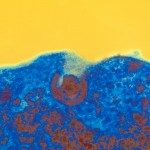Link to Pubmed [PMID] – 28224137
Heliyon 2017 Feb;3(2):e00245
BACKGROUND: HIV-associated neurocognitive disorders (HAND) persist in the post-HAART era, characterized by asymptomatic neurocognitive impairment (ANI) and mild neurocognitive disorders (MND). High mobility group box 1 (HMGB1) is a non-histone chromosomal protein widely expressed in the nucleus of all eukaryotic cells, including brain cells, which acts as a potent proinflammatory cytokine when actively secreted from immune cells. Recent reports suggested that HMGB1 acts on microglial cells to promote neuroinflammation. In this study, our aim was to determine whether HMGB1 is involved in HAND, but also to identify early new markers of neurological impairment in HIV-infected patients.
METHODS: CSF and serum were collected from 103 HIV-1-infected patients enrolled in Neuradapt, a prospective study of the prevalence of HAND in HIV-1 infected patients at Nice University Hospital. Stored fluids were assessed for immunological, virological, and brain metabolite parameters. In addition to HIV RNA and DNA measurements, expression of T-cell surface markers of activation (CD38 and HLA-DR) was analyzed on whole blood. Concentration of 27 cytokines and chemokines was measured using multiplex bead assays on serum and CSF. Concentration of HMGB1 and anti-HMGB1 IgG autoantibodies were also measured on the same samples. Changes in cerebral metabolites N-acetyl aspartate (NAA), Choline (Cho) and creatinine (Cr) were assessed by magnetic resonance microscopy (MRS).
RESULTS: Clinical, virological and immunological characteristics were comparable between HAND (n = 30) and no HAND (n = 73) patients, except the absolute numbers of CD8 T cells, which were higher in patients with HAND. Among the 29 molecules tested, only 4 of them were significantly upregulated in the CSF from HAND patients as compared to healthy donors i.e. HMGB1, anti-HMGB1 IgG antibodies, IP-10 and MCP1. CSF HMGB1 levels were positively correlated with HIV-1 DNA in aviremic HAND patients, suggesting a positive impact of HMGB1 on HIV reservoirs. Moreover, in contrast to NAA/Cr and Cho/NAA ratios, circulating anti-HMGB1 IgG antibody levels could discriminate patients with no HAND from patients with no HAND and a single deficit (average ROC-AUC = 0.744, p = 0.03 for viremic patients), thus enabling the identification of a very early stage of neurocognitive impairment.
CONCLUSION: We report that brain injury in chronically HIV-infected patients on stable HAART is strongly associated with persistent CNS inflammation, which is correlated with increased levels of HMGB1 and anti-HMGB1 IgG in the CSF. Moreover, we identified circulating anti-HMGB1 IgG as a very early biomarker of neurological impairment in patients without HAND. These results might have important implication for the identification of patients who are at high risk of developing neurological disorders.

